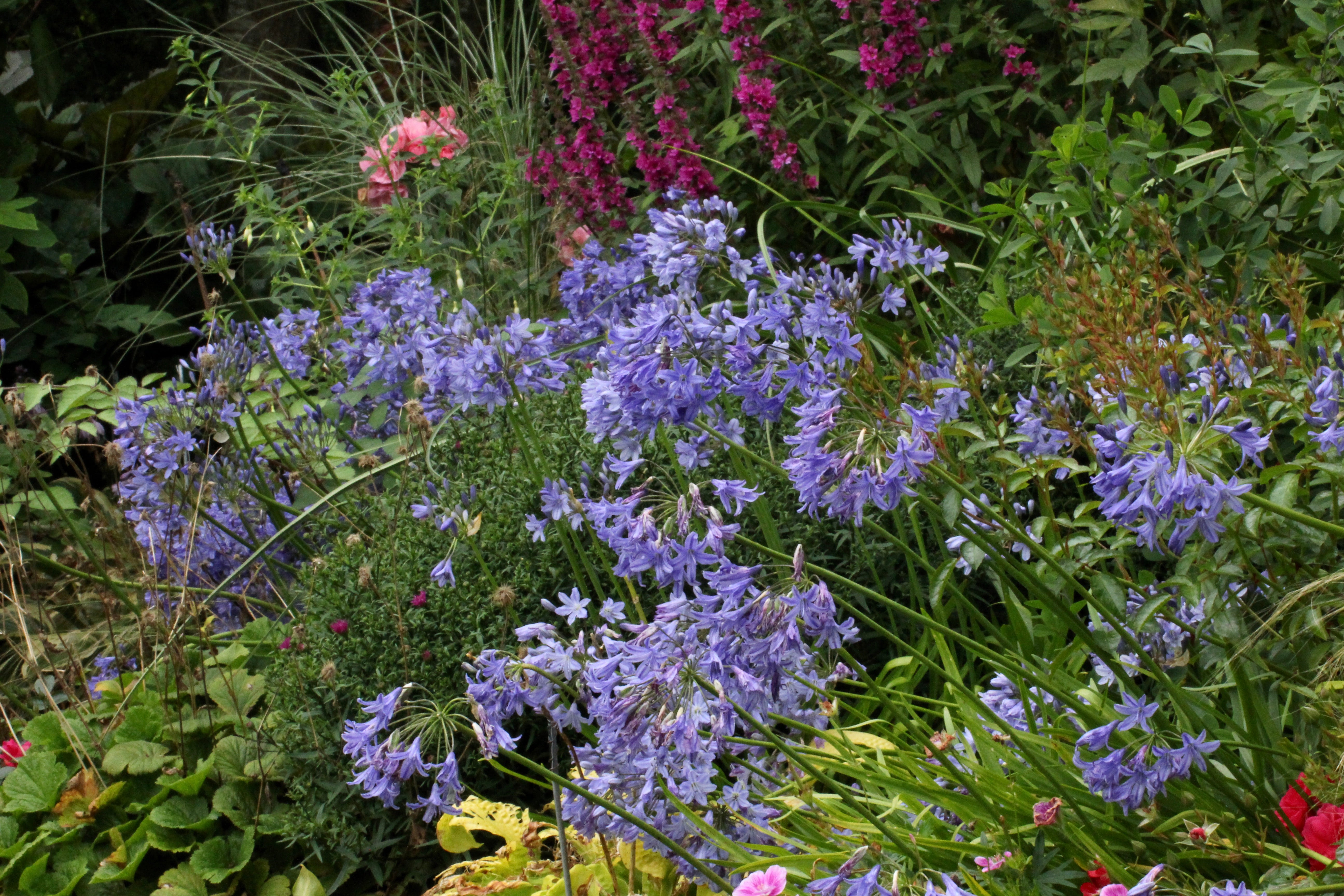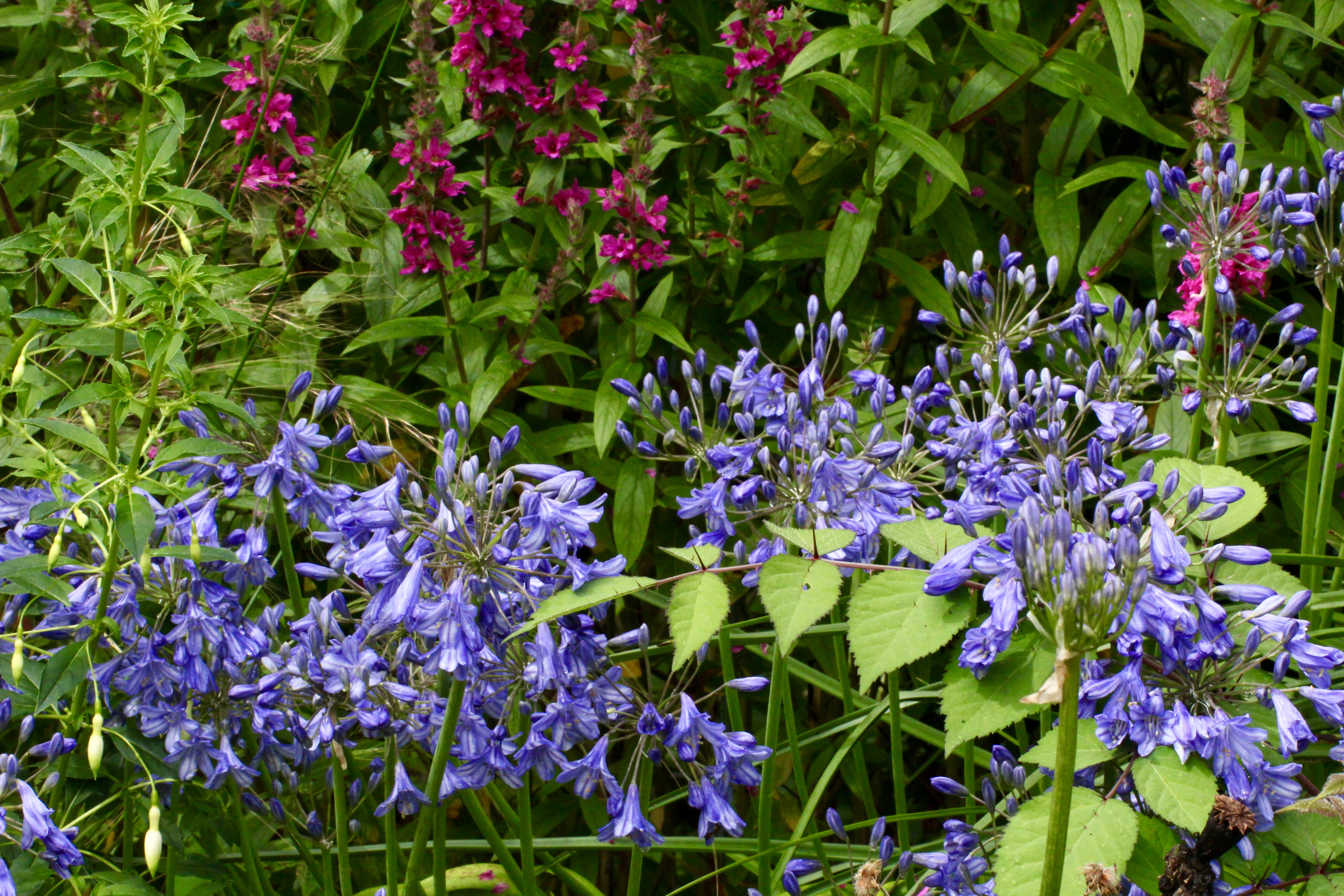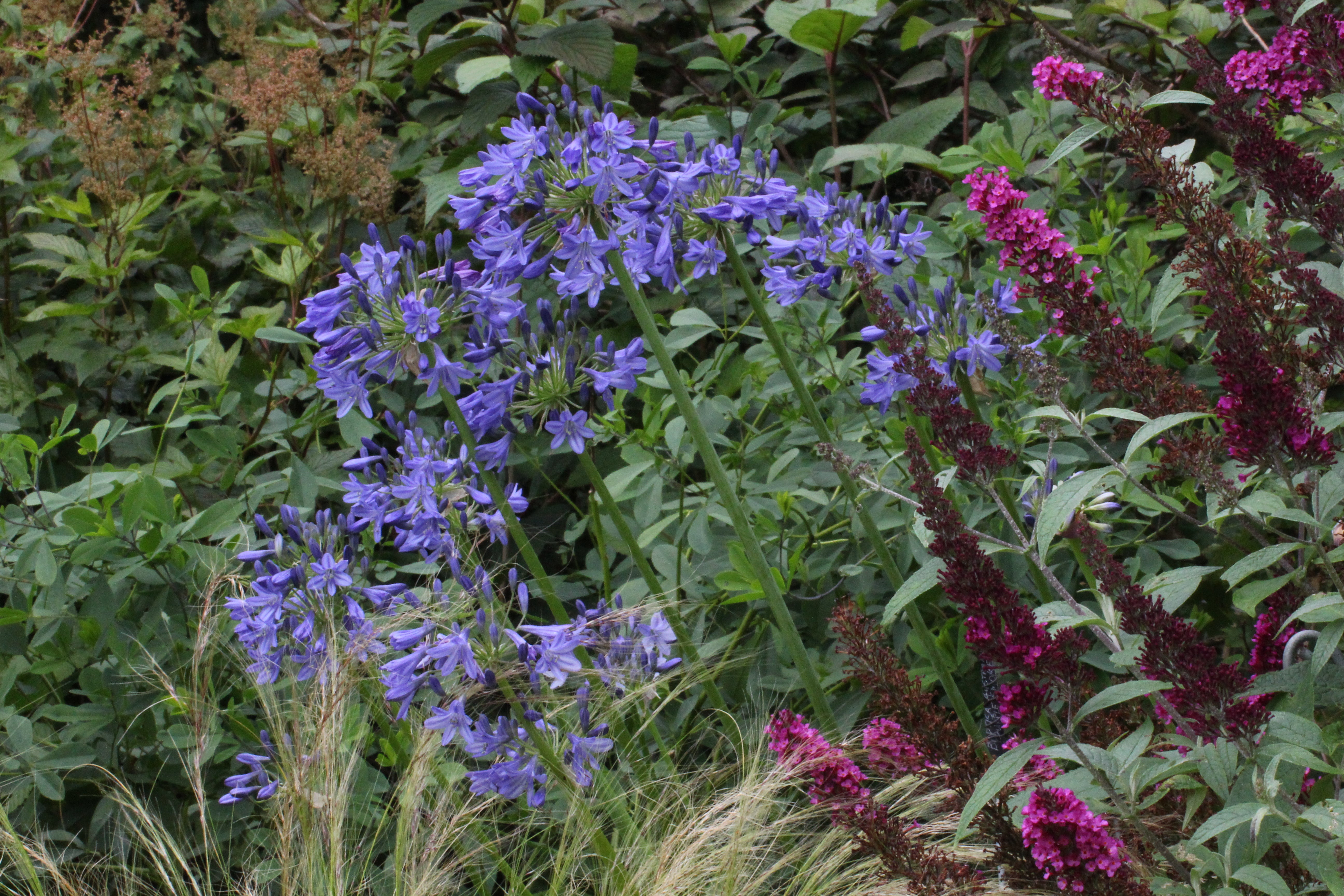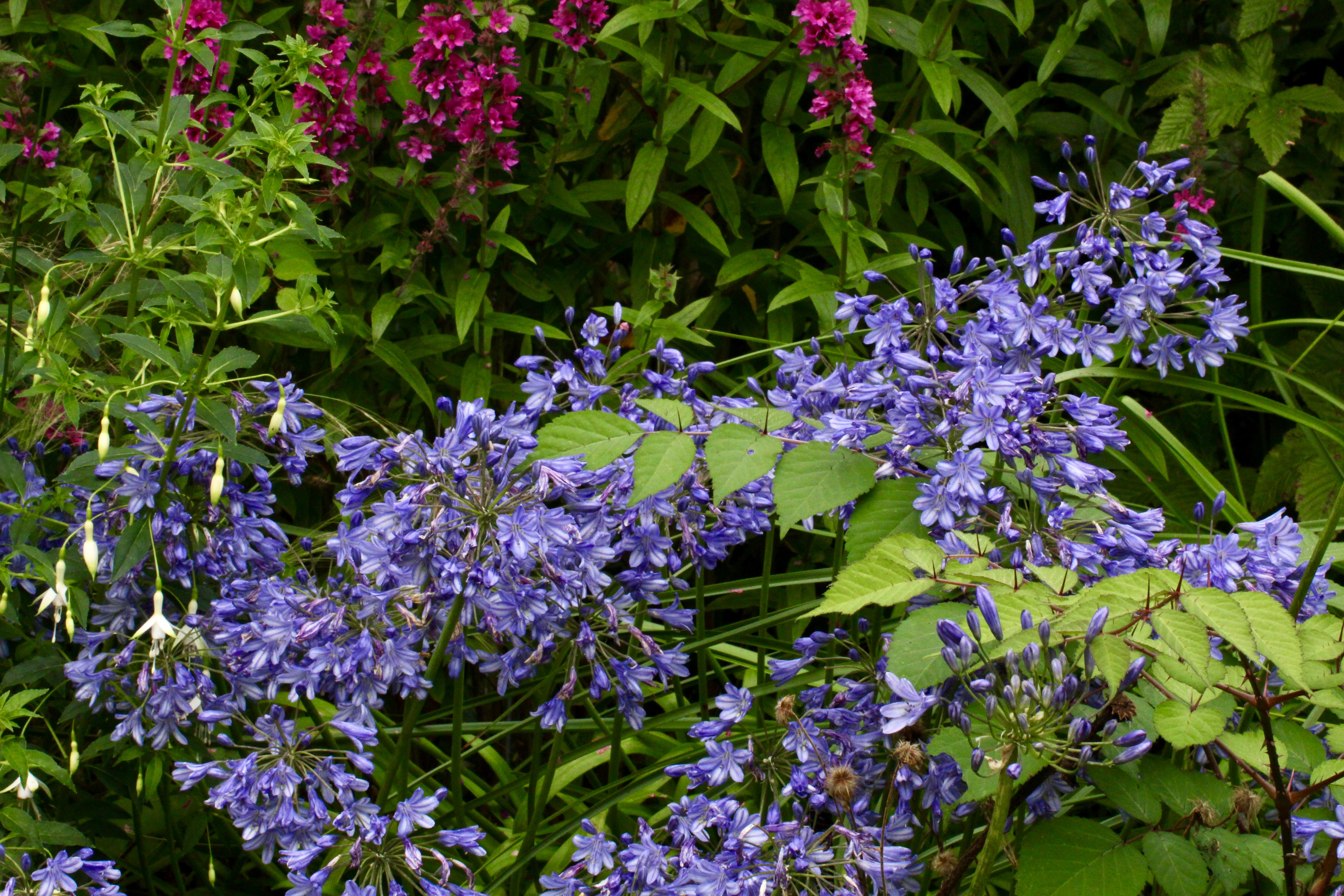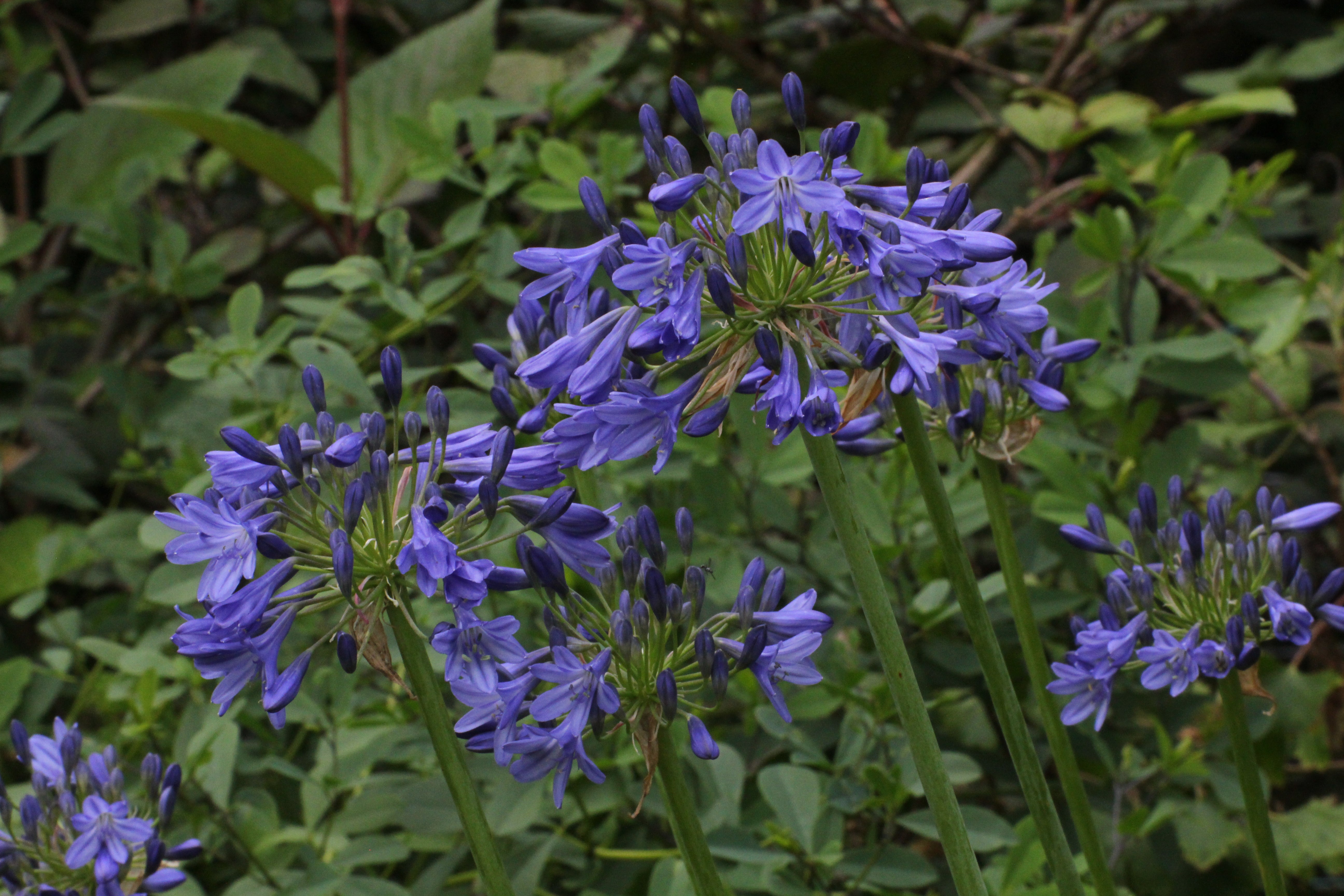Agapanthus Headbourne hybrids
£3.99
£7.99
Unit price
/
Unavailable
Approx. 0.5 litre pot
About this cultivar:
Agapanthus Headbourne Hybrids were originally raised and introduced in the 1940s by Hon. Lewis Palmer at Headbourne Worthy in Hampshire. The flowers on this cultivar vary in colour from light to dark blue. Still going strong, this is an old favorite. A variable group and not a cultivar.
- Position: Full sun, partial shade (better in full sun)
- Soil: Almost any soil - grows well in Ballyrobert!
-
Flowers: July, August, September
- Other features: Bees and Butterflies
- Hardiness: Fully hardy - grows well in Ballyrobert!
- Habit: Clump forming
- Foliage: Deciduous
- Height: 60 to 90 cm (2 - 3 ft)
- Spread: 30 to 60 cm (1 - 2 ft)
- Time to full growth: 2 to 5 years
- Plant type: Herbaceous Perennial
- Colour: Blue, green
- Goes well with: Achillea, Coreopsis, Crocosmia, Hemerocallis,, Kniphofia,and Stipa tenuissima. We like to experiment with blue-on-blue (Eryngium and Agapanthus!) or blue on white (White Hydrangea and Agapanthus).
About this genus:
Agapanthus (lily-of-the-nile) is a South-African perennial genus that is known for being a fantastic summer-flowering, butterfly-attracting perennial - our second best selling plant is Agapanthus! At Ballyrobert we've trialed many cultivars to find what we think are the best performers out there.Agapanthus forms clumps with strap-like leaves which in the summer produce stems ending with with large circular arrangements of trumpet-like flowers. The clump-size, stem-length, flower colour and foliage can vary depending on the cultivar. Flower colours can vary from light to dark purple, light to dark blue, grey to white, and even bicolour. The foliage can range from evergreen to semi-evergreen to deciduous.
Agapanthus tend to prefer full-sun but will also grow in part shade. They tend to be quite drought tolerant. Some Agapanthus are supposed to be tender. We don't sell those ones here! All the cultivars we sell have been tested in our own garden over a number of years. We've found them to be tough, fully hardy, low maintenance plants perfect for a wide range of gardens. Unsurprising since they are native to South Africa - a place of wildly varying habits.
Agapanthus combine well with other sun-lovers and/or lily-type plants. You can try: Achillea, Coreopsis, Crocosmia, Hemerocallis, Kniphofia, and Stipa tenuissima. We like to experiment with blue-on-blue (Eryngium and Agapanthus!) or blue on white (White Hydrangea and Agapanthus)

